Khewra Salt Mines
In the Punjabi town of Khewra, next to Pind Dadan Khan, you can find the Khewra Salt Mine. The mines were found in 320 BC while Alexander the Great’s army was taking a break nearby, and commercial production didn’t start until the Mughal era. Since the Indian subcontinent was divided, the mine has been under the management of the Pakistan Mineral Development Corporation (PMDC). It is one of the most significant natural resources of Pakistan.
The Khewra Mines, which draw thousands of tourists annually, is now a well-liked tourist attraction for visitors from other countries. A British geotechnical engineer named Dr. H. Warth created the mine’s main tunnel, where tourists tend to congregate.
Although it is Pakistan’s most significant source of consumable salt and the second-largest salt mine on the planet, you might be asking why it is so well-known as a tourist site. One peek inside the cave is all it takes to find the answer, but if you need more incentive, there’s much to discover. The Khewra Mines have 19 levels and more than Forty kilometers of tunnels, including seven stories above and 12 levels below ground.
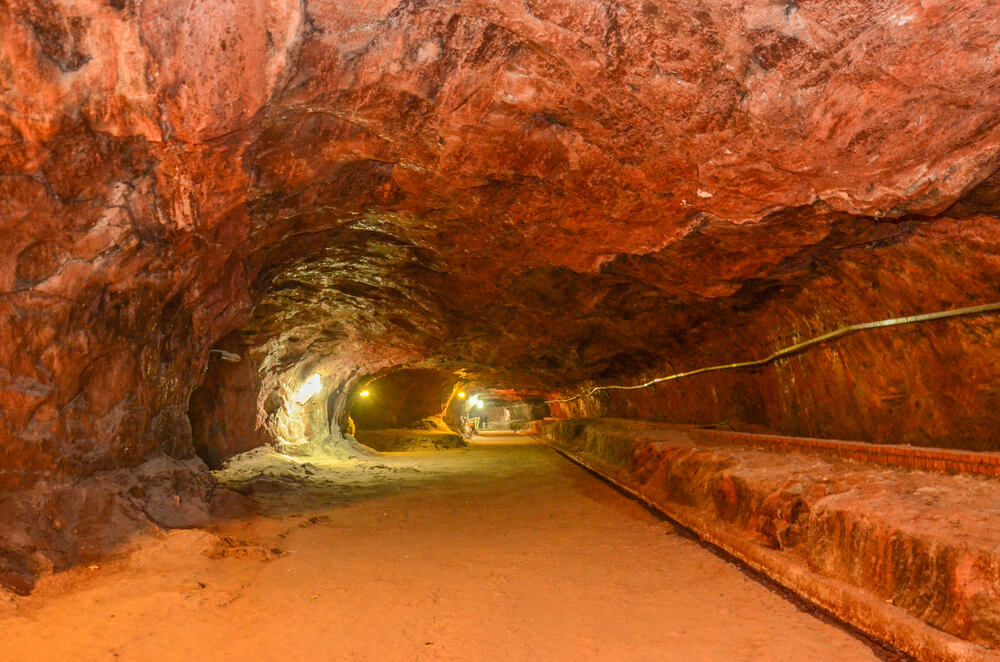
The enormous mine contains almost 40 kilometers of tunnels extending over 730 meters, or nearly half a mile, into the mountain beneath the salt resources. It has a surface area of 110 square kilometers and is 228 meters or 748 feet deep (with 11 different stories). Only half of the salt discovered is mined; the other half acts as reinforcement pillars to hold up the mine. It is done to prevent the enormous space from sinking in on itself. Some remarkable sights have been constructed inside the salt mine, thanks to the sizable area, a sizable labor force, and the simplicity of carving and building with salt bricks.
History of Khewra Mines
In memory of Lord Mayo, who explored the Khewra Salt Mine while serving as India’s Governor, the mine is also called the Mayo Salt Mine. The mine is situated within a salt range that was developed approximately 800 million years ago when a deep marine evaporated and was followed by a geological activity to create a salt range about 300 kilometers long (185 miles).
When Alexander the Great traveled through the Jhelum and Mianwali region in his Indian mission, he came across the salt deposits at Khewra. However, the horses of Alexander’s troop, which were observed tasting the rocks, were the ones who found the mine, not he or his friends. After licking the rock salt stones, his army’s sick horses likewise made a full recovery. Salt was traded throughout the Mughal era in many markets, even Central Asia. Sikhs seized control of the mine after the fall of the Mughal dynasty.
Gulab Singh, the Raja of Jammu, and Hari Singh Nalwa, the Sikh General in charge, shared control of the Salt Range. The latter held Khewra; the former was in charge of the Warcha mine. During the Sikh era, salt was mined for use and as a means of income. The British continued to expand the mine in 1872, sometime after seizing the Sikhs’ domain.
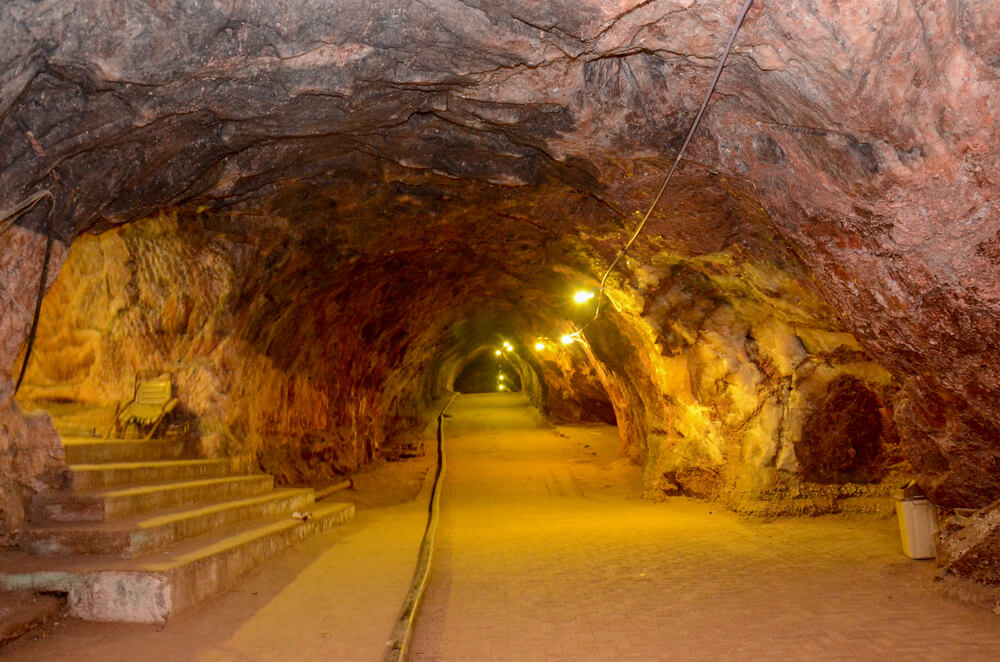
They discovered that the digging had been poor, with crooked and tiny tunnels and openings that made laborers’ mobility challenging and hazardous. There was little water inside the mine and nowhere to store the extracted salt. The only route to the mine passed via a challenging, rugged landscape. The state straightened the road to solve these issues, constructed warehouses, installed a water supply, enhanced the gates and tunnels, and improved salt excavation methods. To prevent the smuggling of salt, penalties were imposed.
Birbal Sahni found proof of land plants, fruiting bodies, and insects inside the mine while working with the Geological Survey of India in the 1930s and 1940s. He believed these organisms to be from the Paleo period, whereas Michael Cremo said they were from the Cambrian. However, modern geologists do not concur with Cremo’s assertion.
There have been some incredibly muggy days in the salt mines. Poor workers were imprisoned in the tunnels during the British era until they produced the required amount of salt for the day. No one was exempt from the regulations, regardless of age, gender, or state of health. Near the salt mine entrance, 12 protesting miners were ruthlessly shot and killed. Their tombs are visible in the center of the mine’s entrance.
What is so Special about Khewra Mines?
Good news! A tiny portion of the Khewra salt mines is a tourist destination. Every month, more than 40,000 tourists come to see this natural marvel.
The main tunnel was constructed over 150 years ago and used to transport visitors within the Khewra mines on a single-gauge electric engine. Inside the mines, you can experience dry weather and salty air, which is good for your lungs.
Additionally, various saline pools are available, each changing color when illuminated. Additionally, you may view a variety of salt-brick replicas of historical sites in Pakistan, such as the renowned Badshahi mosque and Minar-e-Pakistan. The salt bricks are electrically brightened and come in various colors, including red, pink, and white.
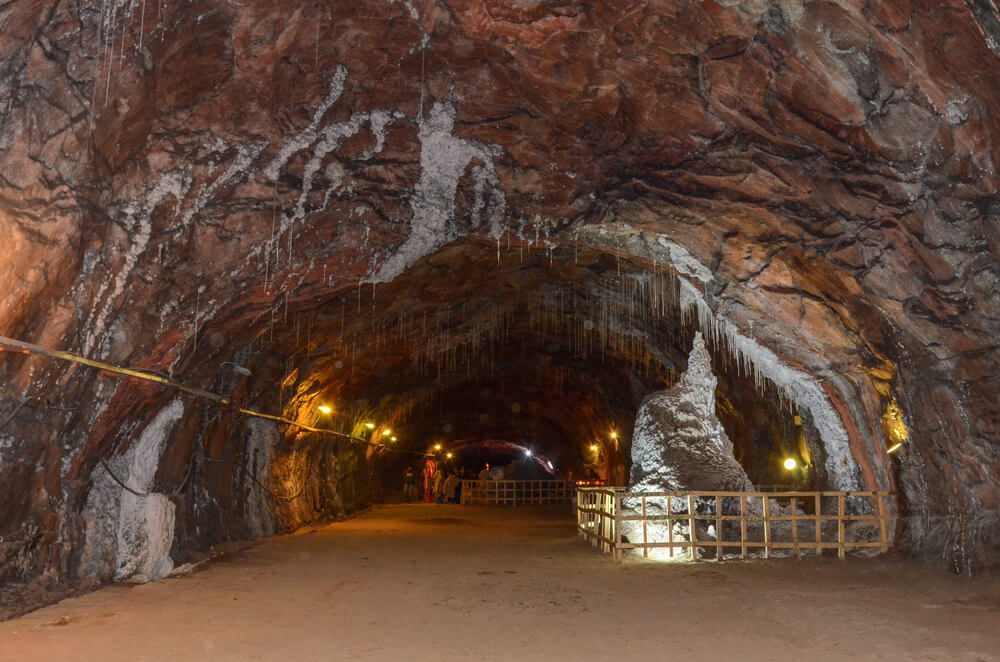
Additionally, there is a passage in the mines called the “Crystal Valley” that is covered in rock mineral salts on the walls and top. When the light hits the stones, they sparkle and cast a beautiful image.
The conference hall chamber in the Khewra salt mines is 75 meters tall and has sturdy stairs up the wall. A deep salt lake is underneath the 25-foot-long salt bridge known as Pul-Siraat. You can wonder at the majesty of the salt crystalline formations in their natural state.
You can eat at the café outside the salt mines after the salt range tour and purchase rock salt lanterns from the gift shop. Additionally, there is a post office for employees and laborers inside the Khewra salt mines.
A clinic with 20 beds was constructed at level five in 2007 to treat asthma and allergies utilizing salt therapy. Many people think that breathing in salt particles may help alleviate respiratory conditions.
Mining of Pink Himalayan Salt
In the West, Himalayan salt is a fantastic alternative to regular table salt since it contains additional minerals. Rock salt is currently extracted from the salt mines by more than 400 people. 30% of the remaining rock salt is used for food reasons, leaving about 70% for industrial application.
The miners dig and extract the salt rocks with various instruments, including pickaxes and hand drills. More than 1,000 tonnes of salt are extracted daily by miners in the form of enormous blocks.
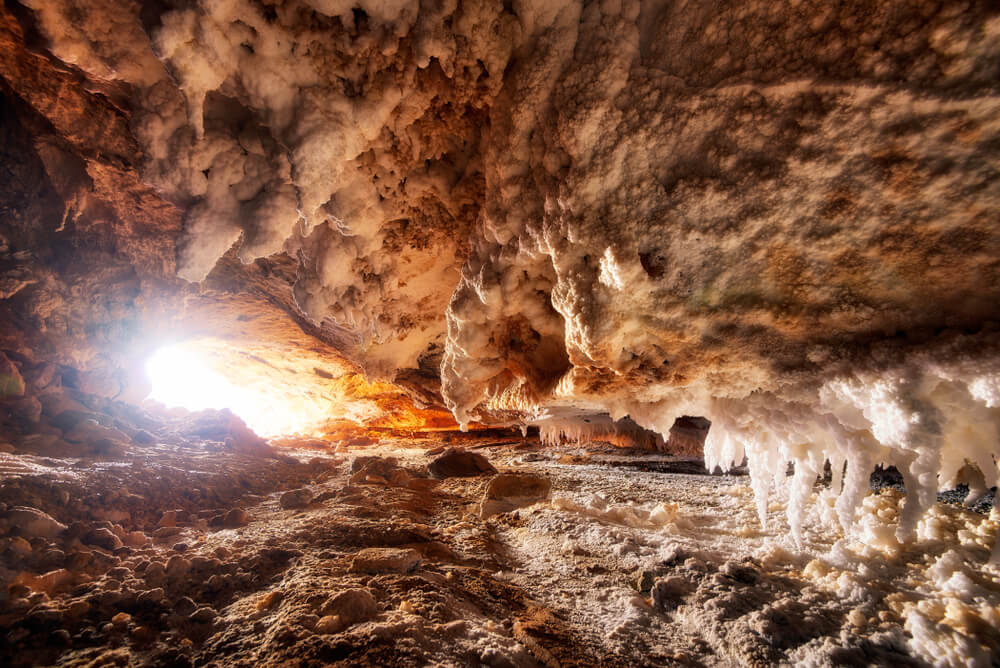
These blocks are afterward placed onto trucks for onward distribution to other manufacturing firms around the country.
This salt creates incredible products because of its distinct properties and compact form. Some businesses produce Himalayan salt lights and other knick-knacks, which are becoming increasingly well-known in the wellness sector. At the same time, other producers turn the salt blocks into refined grains that can be sprinkled on food as a spice.
Khewra Mines: World’s Second Largest Mine
After over 2330 years, the Khewra salt mines are now the second-largest in the world, trailing only the Sifto Canada, Inc. salt mine in Goderich, Ontario. They produce 325,000 tonnes of salt annually, with a lifetime production estimate of 220 million tonnes. This region’s enormous salt reserves, estimated to be 6.687 billion tonnes, are hardly even scratched by this. Although salt is believed to have been mined and traded in this area since Alexander’s time, it wasn’t officially documented until the 1200s under the Janjua-Raja clan.
Attractions Inside Khewra Mines
This is where your dream of riding a mining train can come true. Mining at Khewra started in the 1930s, according to the electric engine that travels from the mine’s entrance to the main hall. There is a per-person ticket fee, but it is in excellent operating order. If there are 12 or more people at your party, you can spend per trip instead of by person. If you wish to explore the mine at your speed, you can also do it on foot.
The train ride concludes at the 75-meter-high assembly hall that serves as the mine’s main cavern. People are frequently in awe of the vastness of space. In this location, a natural wall sculpture resembling Allama Iqbal is also present.
The Badshahi Mosque, which is housed within the center hall, will likely catch your sight as soon as you bid the train farewell. The mosque stands out because it is constructed of rock salt and has salt bricks in various colors. You can understand what a wonder this construction is given that the mine is known for having white, pink, and red salt crystals. This is especially true when lights hidden in nooks along the walls are shining on it. The mosque even boasts two rock salt-carved minarets.
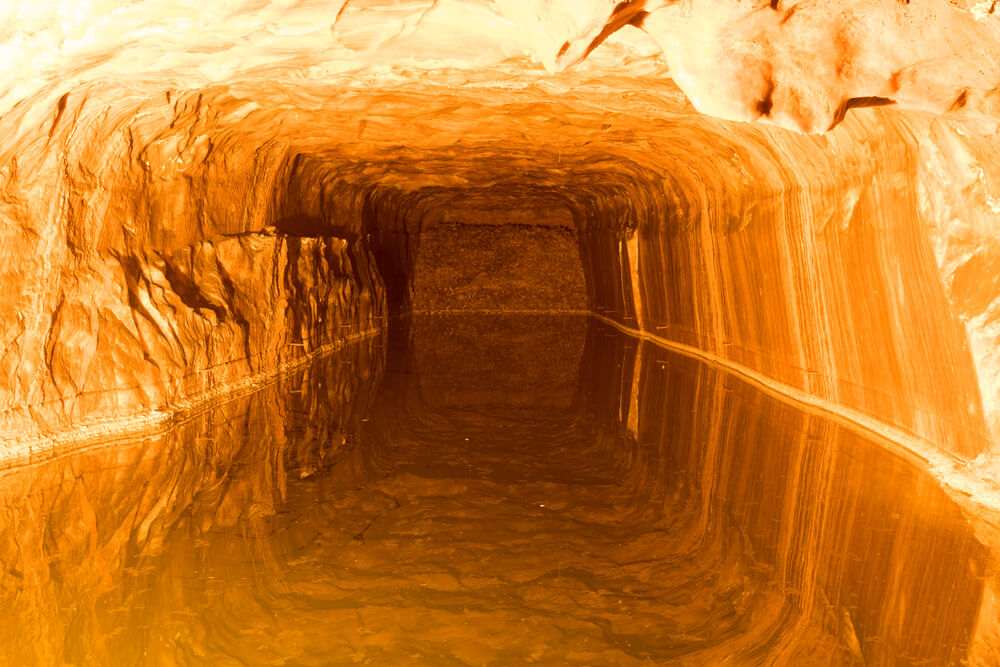
The sights after the mosque will astound you more than anything else. Miniature versions of well-known structures made entirely of rock salt and carved into the main tunnel are also there. The Great Wall of China, the Minar-e-Pakistan, the Shimla Hill of Lahore, and the Mall Road of Murree are a few of these. Each monument’s dazzling illumination has enhanced the multicolored salt’s beauty.
The Palace of Mirrors, also known as Sheesh Mahal, is the name of a tunnel located inside a mine. This tunnel is named this because its salt roof reflects the poor lighting rather than housing a palace monument. The guided trip includes access to the tunnel for exploration. Another marvel created in the mines is a beautiful pond with Christmas trees.
Salt Export from Pakistan
According to a media report on Thursday, Pakistan may overtake other countries in the global salt trade as local rock salt from Khewra in the Punjab province is about to be enrolled with international trade organizations. This registration will stop Indian traders from marketing Pakistani rock salt as Himalayan Pink Salt.
The requirements for registering rock salt with the Geographic region Indications (GI) registry have been finalized by Pakistan Minerals Development Corporation (PMDC), which the Cabinet designated as the applicant organization for rock salt produced in the nation. PMDC is managed and controlled by the Intellectual Property Organization of Pakistan (IPO-Pakistan).
Himalayan salt was transported east and west by ships or via the Spice Road as a significant economic good.
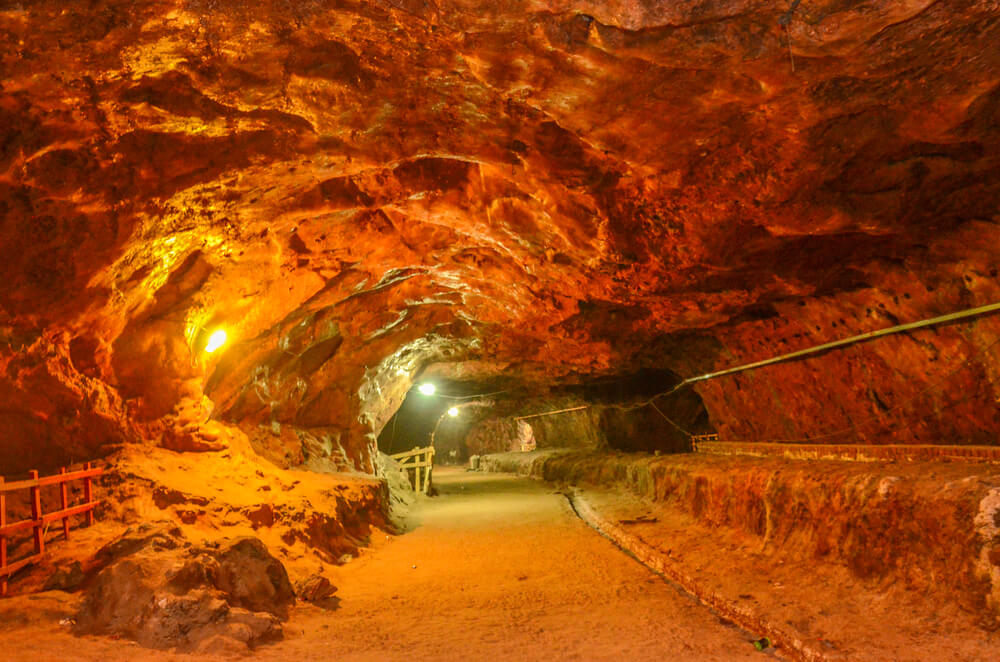
In Pakistan, Himalayan salt production is a significant source of revenue and employment. Himalayan salt has been well-known in international markets for the last ten years.
Himalayan salt is presently used in various industries and professions, from sector to space technology, healthcare to construction, lighting to decorations.
Himalayan salt is primarily sought in the medical sector because of its crystal stone-like structure, distinctive color, capacity to absorb sunlight, and simplicity of processing.
What to Pack for Khewra Mines
It’s crucial to remember that the site is open every day between 9:00 AM and 6:00 PM, including holidays and Sundays, as you arrange your visit.
Locals and visitors will pay minimal entry fees, and there will be reductions for students.
For the tour, there are male and female mining guides available.
It is advised to wear suitable walking shoes for the 1.5-hour mining tour.
All four seasons are agreeable in Khewra Mines, with the cells being chilly in the summertime and warm during the winter.
If you are claustrophobic, reconsider your visit to the mine as it gets narrow at some points, which may make you uncomfortable.
However, since the outside of the mines gets very hot during summer, it would be best to visit during autumn or mild winters.
Do your homework because there are some other must-visit places in the vicinity.
What is the Best Time to Visit Khewra Mines?
Khewra mine is the oldest salt source of the subcontinent. It is located in the foothills of the salt range. Since summers are scorching in the region, it would be best to visit the site in autumn or winter.
PMDC’S Resorts
PMDC used its funds to establish the Khewra Salt Mines Tourist Resort. A stunning mosque has been built inside the mine using rock salt bricks in various colors; when lit, the hollow walls of salt bricks have a lovely appearance. Tourists are fascinated by “Assembly Hall,” a sizable room with a ceiling higher than 250 feet. Certain chambers have saturated brine solution inside of them. When these ponds are lit up with elaborate lights, they appear beautiful.
The “Shish Mahal” region is a translucent salty region with a pale pink color. Over the water, ponds and salt bridges connect several chambers, and when lit by lighting, the reflection of the many salt colors is stunning. In the first phase of the development program, the following facilities at Khewra Salt Mines were planned for creation and development. These facilities have now been finished.
The Resort is a must-visit if you want an elaborated and complete tour of the incredible Khewra Mines of Pakistan.
How Far is Khewra Mines from Islamabad?
Salt range is one of the major tourist attractions of the Punjab province. About 250,000 tourists travel worldwide to see this incredible salt range discovered by Alexander the Great’s Horse. It was taken over by the Pakistan Mineral Development Corporation, manages the salt range, and extracts pure halite weighing about 350,000 tons annually.
Khewra Salt Mines can be reached from Islamabad in 3 hours. The approximate driving distance between Islamabad and Khewra Salt Mines is 199 kilometers or 123.7 miles.
Location of Khewra Salt Mines
Located at the foot of the Salt Ranges, the Khewra Salt Mine is the oldest salt mining site in the region. Salts occur in the form of irregular domed structures. There are seven thick salt seams whose total thickness reaches 150m.
Conclusion
The Khewra Salt mines are a popular attraction worldwide for being the second largest salt ranges in the world. They are located about 3 hours from the capital city of the country. The Khewra salt mines are easily accessible from the M2 motorway, so you will see numerous tourists visiting the mines all the time. The history of these salt ranges dates back to the times of Alexander the Great when his men accidentally discovered the mines. The mine produces about 350,000 tons of salt per year.
FAQs
How deep are the Khewra Mines?
Interestingly, the total salinity of the mine is estimated at 6,687 million tons. According to reports, the salt mine covers 110 square kilometers and has a real depth of 228 meters or 758 feet. The mine has 11 floors, 6 of which are underground.
Where is the salt range located?
At the west side of the Jhelum River, the slat ranges rise abruptly from the plains of Punjab. These jagged peaks and desolate ravines run for 180km in the west. linear formation of these sheer escarpments containing bright red marls has gained their name for having the thickest seams of rock salt in the salt range. The Salt Range is located near Pind Dadan Khan in District Jhelum.
How is it the second-largest mine in the world?
The Khewra Salt mines were discovered by the horses of the army of Alexander the significant ack in 326 BC. The army stopped here to rest, and the horses started to lick the stones nearby. One of the soldiers tried it, and these vast salt ranges were discovered. It is the second largest salt mine in the world, with a depth of 748 feet spanning over 11 stories. The tunnels run half a mile, and only 50% of the total extraction is taken out, and the rest is used to support the mine columns.
